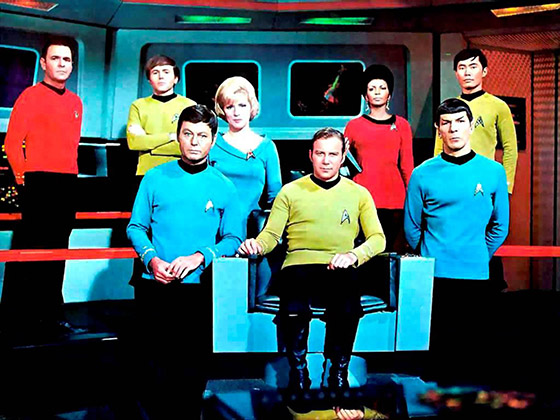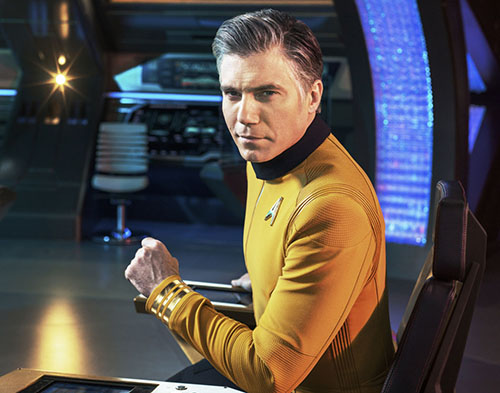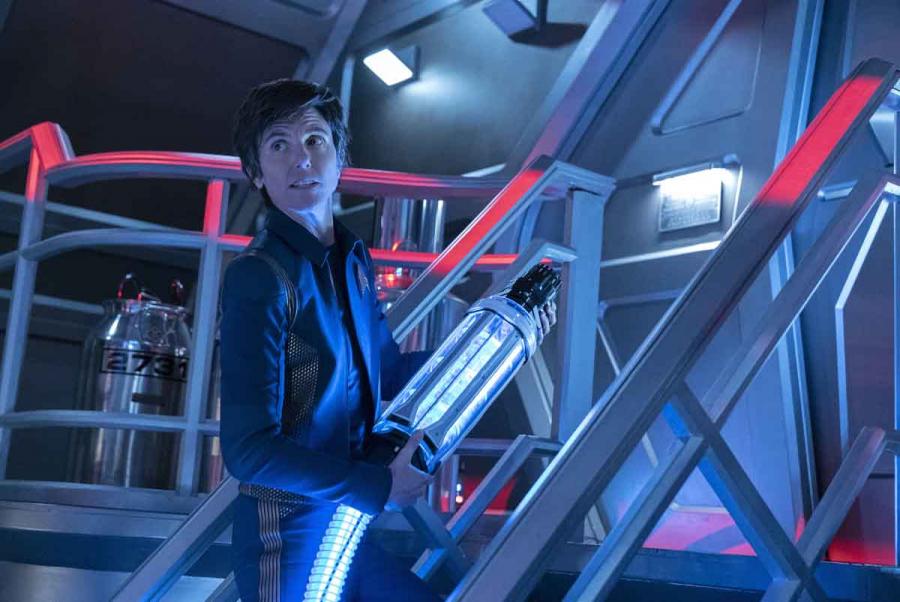
Sydney
June 22-23, 2024
Sydney Showground Olympic Park



Space, the final frontier. These words fill the hearts and minds of sci-fi fans with hope and excitement and have done so since the birth of Star Trek in 1966.
When it was first broadcast on TV, the series introduced the world to some of the most popular and enduring characters in pop culture. Captain Christopher Pike, Captain James T Kirk, his first officer, Spock, and the entire crew of the USS Enterprise engaged a generation and held audiences captive, until the show’s unfortunate cancellation in 1969.

In 2017, after numerous other series graced the small screen, Star Trek returned to TV with a new ship and fresh crew. Star Trek: Discovery, a Netflix original series, takes viewers on all-new adventures alongside the crew of the USS Discovery, an experimental science vessel.
This new series takes place ten years before Kirk and his crew departed on their five-year voyage, which has most fans scratching their heads, as the technology shown in this new series seems more advanced than what originally appeared in the 1966 production.
The USS Discovery has holographic communication, an engine run on space spores and the ability to make jumps through space, none of which was seen in the Kirk years or in any of the decades following.
Since the series premiered, fans have been wondering how this continuity issue would be explained and if it would believable. After the first season concluded fans were no closer to understanding the discrepancies than when they first started watching. They were, however, stunned/intrigued, when season one closed with *spoiler alert* the USS Enterprise hailing the Discovery for assistance

Anson Mount as Christopher Pike
Once the beloved ship was introduced to this new series, the creators had to explain why it was there and who was captaining it. In the season two premiere, Captain Christopher Pike is brought in (played brilliantly by Anson Mount) as the captain of the Enterprise. He informs the Discovery crew that the Enterprise was catastrophically damaged while investigating seven signals. Due to this, and the Discovery being without a captain, he is taking emergency control of the ship.
What could have possibly crippled the ship in such a way? The answer to this question came in episode four of the latest series, which aired earlier this month. Entitled An Obol for Charon, this episode begins with the Enterprises’ Number One beaming onto the Discovery and informing Captain Pike that the ship’s engineers have discovered what took down the Federation’s flagship vessel.
The holographic communications system malfunctioned and tore through the rest of the ships systems, causing the catastrophic damage we learned about in episode one. Captain Pike orders the holographic system ripped out and for standard view screens to be used for all communications. This explains why this technology isn’t seen in the original series and why the Federation would have abandoned it.
Given the new tech was able to cripple their flagship and that Pike has considerable sway and input with the Federation, it would make perfect sense for them to discontinue the holographic use across all their ships. At this time in Trek history, tensions are high with the Klingon empire and the two factions are at war. The Federation cannot afford to allow their ships to be taken down so easily, so it would be nothing for them to scrap the tech. Captain Pike himself goes on to say that he isn’t a fan of the holographic communication system anyway, as, according to him, it’s like talking with a ghost.
The creators of the show have cleverly filled one plot hole, but there is another one that remains – the experimental spore drive. For those that aren’t aware or don’t fully understand, the spore drive is an organic propulsion system being experimented with by the Federation. The system is powered by mycelium spores which are, in turn, harvested from a variety of fungus. The use of the drive allows the Discovery to perform jumps across space, sort of like teleportation. The ship is able to accomplish by using the spores to access the mycelial network, which is a microscopic subspace domain, stretching throughout the entire multiverse. This technology is far more advanced than what is seen in any of the other series of Star Trek and fans have been waiting for this to be explained as well.

Tig Notaro as Jett Reno
Episode four of season two seems to allude to this as well. At one point in the episode, Discovery’s spore drive specialist Paul Stamets argues with a newcomer to the ship, engineer Jett Reno, that the renewable spore drive is far better than the older dilithium crystals, which powers most ships warp drives. However, toward the end of the episode, Stamets and Reno communicate with a parasite that has infected one of the crew.
The parasite explains that its entire species lives in the mycelial network and the jumps the Discovery has been doing has caused irreparable damage to the ecosystem. Stamets then promises to do all he can to fix what has happened.
This Starfleet’s mandate clearly prohibits any interference with alien life and due to the damage caused to the mycelial network, the Federation would have no choice but to abandon spore drive.
The latest episode, entitled Saints of Imperfection, includes another piece of tech which shouldn’t exist. This episode heavily features Section 31, essentially the black ops arm of Starfleet.

Shazad Latif as Ash Tyler & Sonequa Martin-Green as Michael Burnham
During the episode, Ash Tyler, formally a klingon double agent, shows up on the Discovery as a member of Section 31. To communicate with his own ship, he has a communicator exactly like the communicator badges in The Next Generation.
Captain Pike even comments on the advanced tech, asking, “What the hell kind of communicator is that?!” Given that The Next Generation takes place roughly 100 years after Discovery, it seems that Section 31 might be more advanced than initially realised. Perhaps this off-the-books, black ops organisation is 100 years ahead of the rest of the Federation and maybe even built the USS Discovery herself.
The differences in Star Trek: Discovery can be confusing and/or frustrating and many fans aren’t sure how they feel about the show, but the majority of fans and groups seem to embrace the show and its fresh take on a beloved series, like Starfleet International, a Star Trek fan association. Many of the members of Starfleet’s Sydney chapter, the USS Tydirium, love the show and even wear the uniforms from the Discovery at events and conventions.
Although the changes and differences can take some getting used to, Star Trek: Discovery is an intriguing and fascinating entry into the Star Trek universe and is seemingly committed to ensuring the continuity and timelines stay true to the original vision and series.






